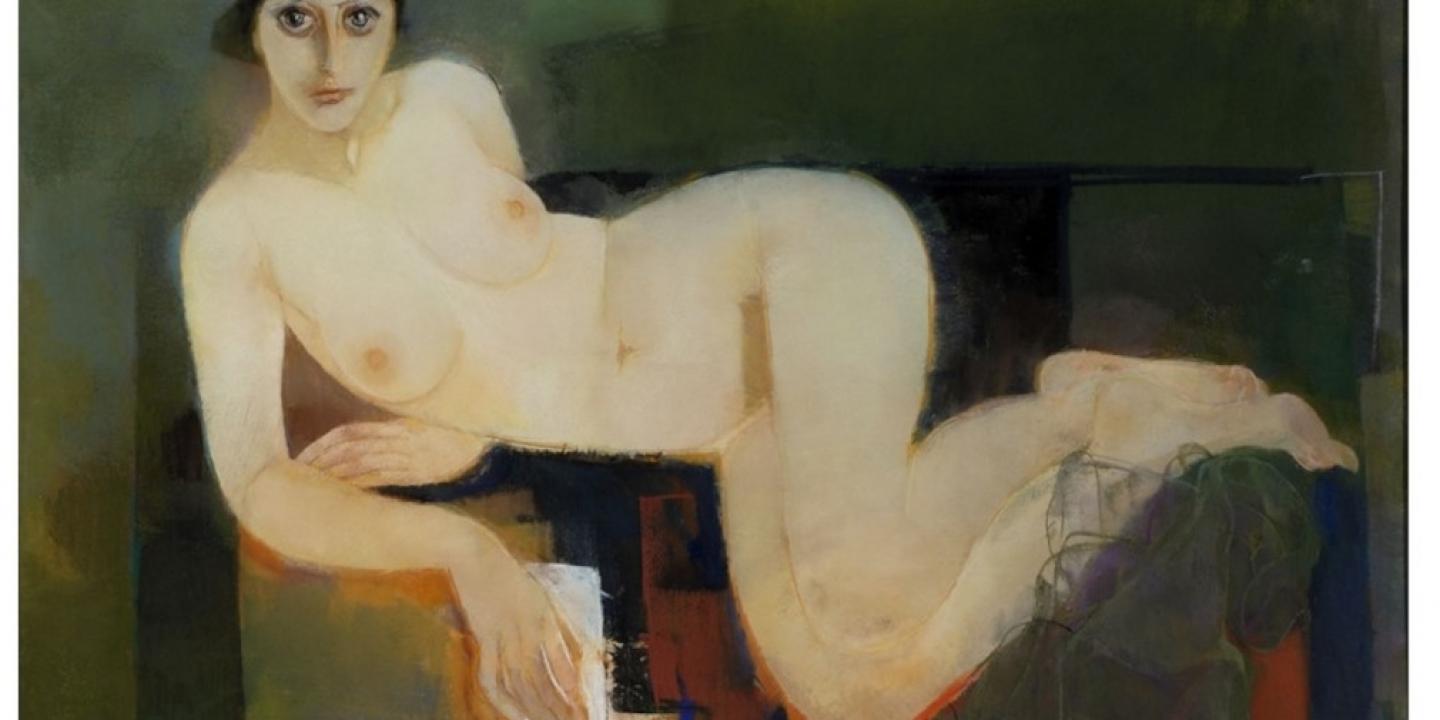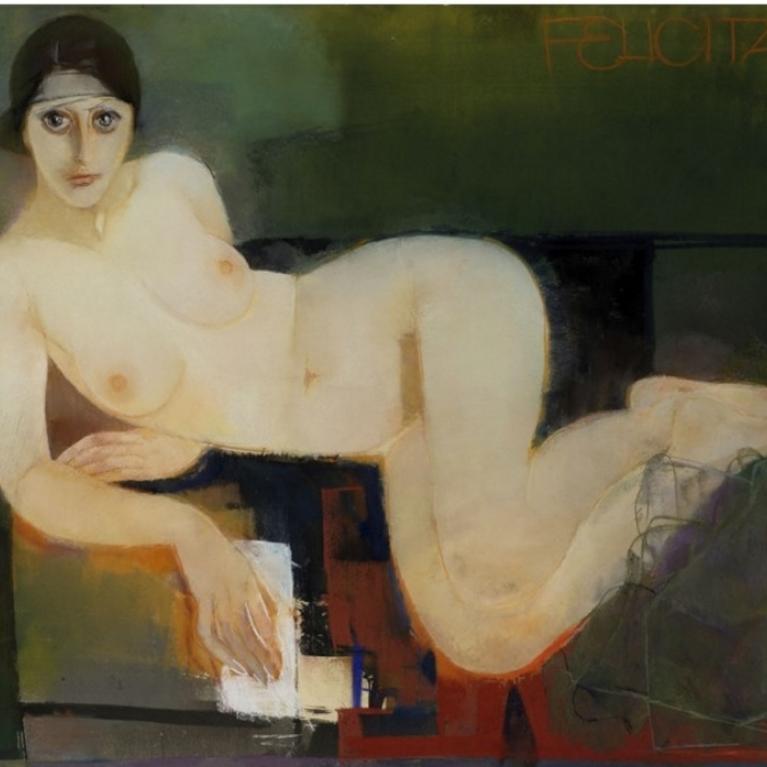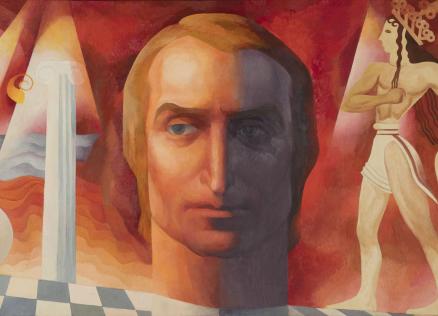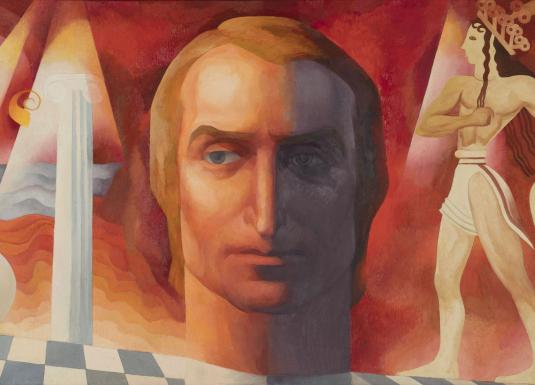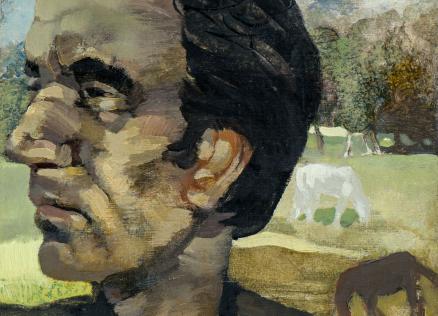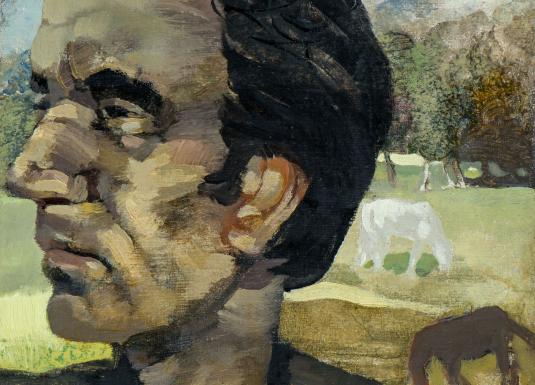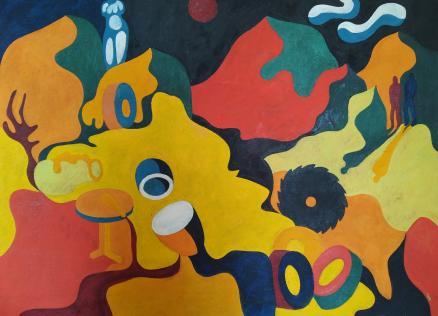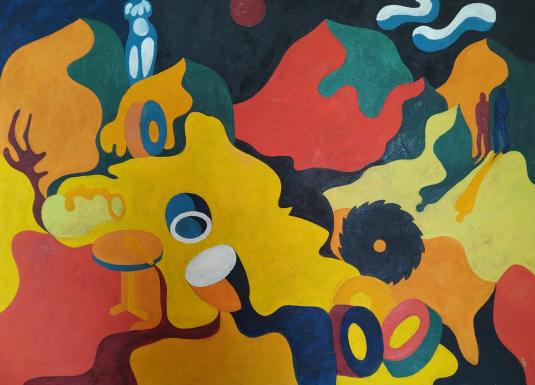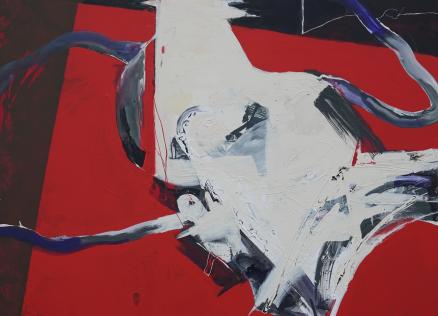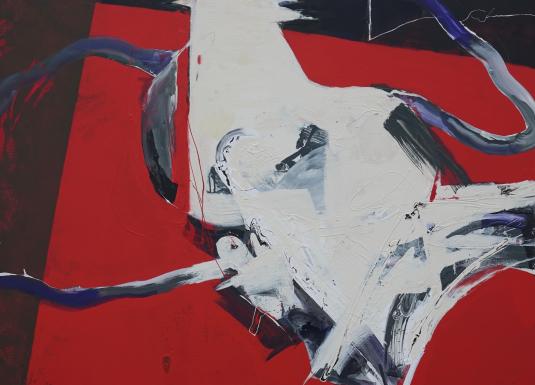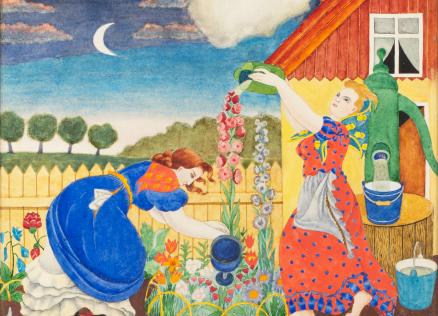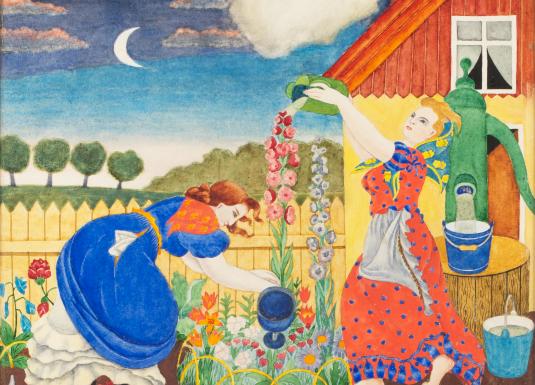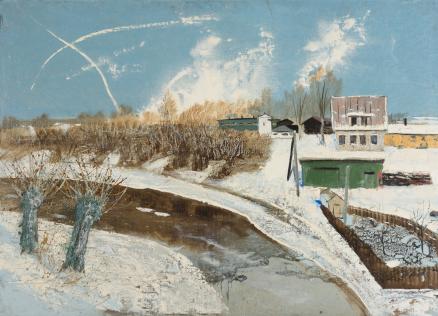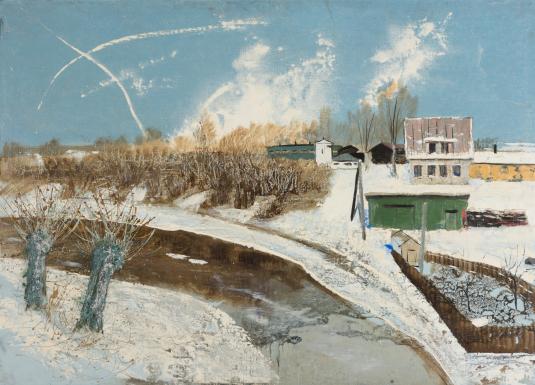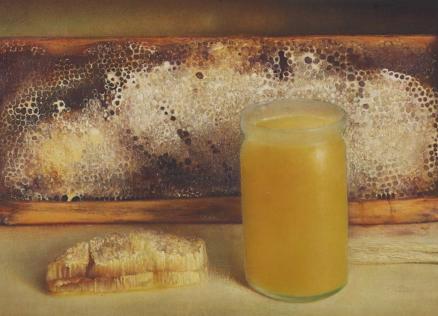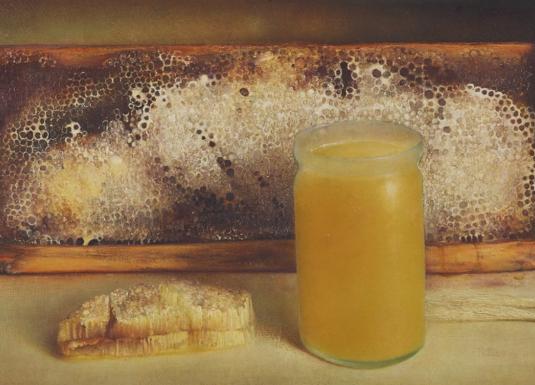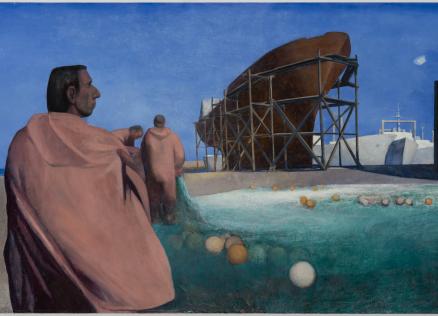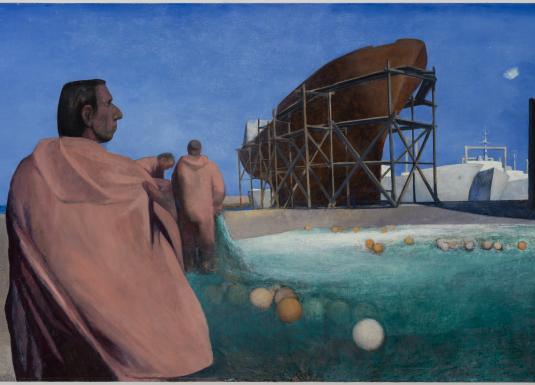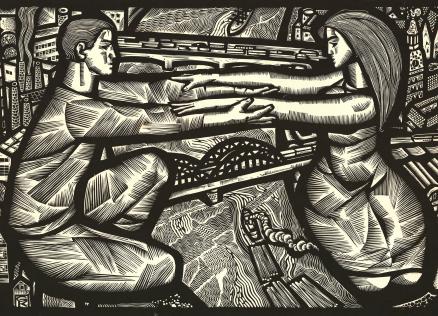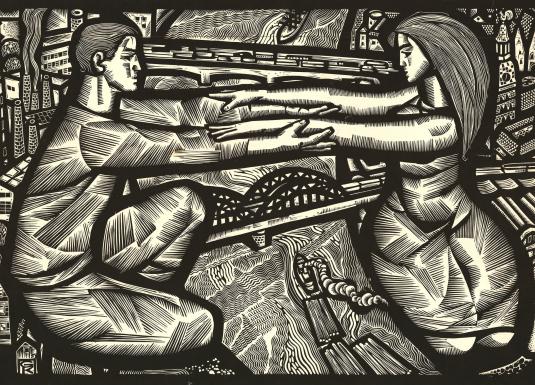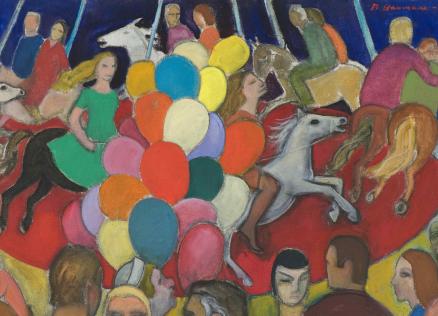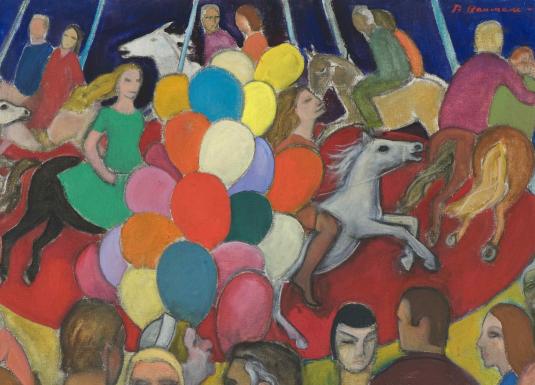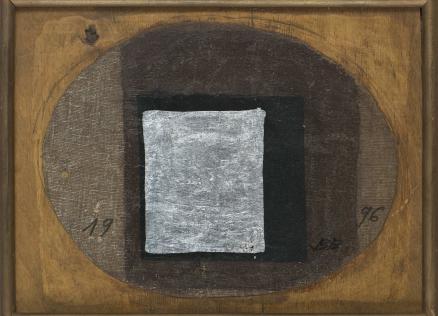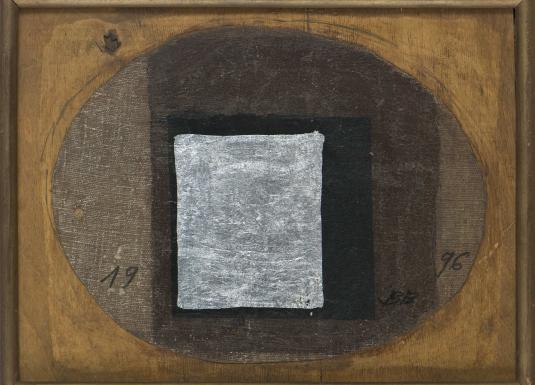Felicita Pauļuka (1925–2014). Pastels and Drawings
From 8 December 2016 to 5 March 2017, the exhibition “Felicita Pauļuka (1925–2014). Pastels and Drawings” will be on show at the 4th Floor Exhibition Hall of the main building of the Latvian National Museum of Art in Riga (10 K. Valdemāra Street). The show of Felicita Pauļuka’s works opens the new cycle of museum exhibitions “The Generation”, dedicated to the young of the 1950s–60s.
Felicita Pauļuka (1925–2014) is one of the most outstanding painters of portraits and nudes in Latvian art. In 1940, the fifteen-year-old Felicita Jānke enrolled into the Art Academy of Latvia. It was a rather rare occurrence for the academy – to accept a student without a secondary school diploma, but the matriculation commission was impressed by the girl’s superb drawing skills. Nevertheless, the studies had to be interrupted for four years. In 1943, Felicita married painter Jānis Pauļuks (1906–1984). In 1944, she resumed her studies, at the same time working as an illustrator and cartoonist at the Cīņa (Struggle) newspaper. In 1949, she graduated with distinction from Ģederts Eliass’ Workshop of Easel Painting at the Art Academy of Latvia.
In the 1950s and 60s, artists whom the authorities considered promising had the opportunity to go on creative trips not only in Latvia, but also in the broad expanses of the Soviet Union, and Felicita Pauļuka took up the offer. These travels resulted in cycles of charcoal and sanguine drawings (Latvian Fishermen, Georgian Peasants, Miners of Donbas, Saaremaa Fishermen and others), which testified to the artist’s virtuoso skill in these techniques and also her ability to reveal the nature of the character of the models.
Since the 60s, Felicita Pauļuka devoted herself to pastel, and for the entire life she held that “it requires work with the heart’s blood. Only by mastering the specific expressive potential of pastel, it is possible to find new values.” The artist’s style changed over time: sometimes it was laconic and harsh, at others it was tender and caressing, at times lively and passionate, while on occasion it was cold and distanced.
“The work begins with the choice of the model. I am very subjective. (..) you cannot force respect upon yourself – it either exists or not. By concentrating on the model’s essence one cannot become monotonous. Each model sets a new task, compositional structure, tonal solution, changes in the use of materials. The model’s mental state determines the choice of either bright or reserved harmonies,” recounted Felicita Pauļuka.
At the beginning of the 1960s, the painter begun a series of portraits of Latvian cultural figures, which she continued in the following years. The painter depicted artists, writers and actors in an objective and recognisable manner, at the same time preserving her own viewpoint in the characterisation of the sitters.
Felicita Pauļuka’s paintings of nudes are manifold and expressive, occupying a central place in the master’s oeuvre. “The human body reveals not only the outer, but also the deepest essence, just like the face. Hands and feet also have their life story. Therefore, the nude for me is an extended portrait in which I involve the entire body and express the essence of the person,” the artist explained. This deeply intimate and delicate genre reveals the author’s worldview and the full extent of her refined technique. Over time, cycles of nude paintings of a single model formed in Felicita Pauļuka’s oeuvre, and each of them contains new discoveries, nuances of character and mood.
The exhibition consists mainly of works from the collection of the Latvian National Museum of Art.
ABOUT THE CYCLE OF EXHIBITIONS THE GENERATION
Each generation belongs to an era. In its new cycle of exhibitions The Generation, the Latvian National Museum of Art (LNMA) focuses on art of the second half of the 20th century. The cycle’s programme, which will be realised from 2016 to 2020 in the 4th Floor Exhibition Hall of the main building of the LNMA, includes separate expositions dedicated to such important figures in Latvian art as Daina Riņķe, Henrijs Klēbahs, Līvija Endzelīna, Gunārs Cīlītis, Rita Valnere, Aleksandrs Stankēvičs, Rūsiņš Rozīte and Gunārs Krollis.
It is a generation of artists which were born during the first Latvian Republic in the 1920s–30s and went through dramatic epochal shifts. The free yet authoritarian Kārlis Ulmanis’ Latvia was followed by one occupation, then another, a war, another occupation and the introduction of Socialist Realism in art. Yet this was the generation which possessed youth, power and energy in the period of totalitarianism. On the one hand – communist ideology, on the other – the artists’ bohemian life imbued with idealistic hope.
There were many who in their youthful enthusiasm wanted to create “new art” or even “free art”. In 1956, the 3rd Congress of the Artists’ Union of Latvia took place in the elevated mood of the Khrushchev Thaw. It marked the arrival of young artists, who pointed to the necessity to establish a separate Section of Young Artists and to organise special young artists’ exhibitions. The First Exhibition of Young Artists’ Works was organised in 1956, and since then these annual shows became an important event in the artistic calendar. The young artists of that time were active participants in exhibitions.
The cycle of exhibitions The Generation, dedicated to the young of the 1950s–60s, begins with the show of Felicita Pauļuka’s works.
EXHIBITION CURATOR:
Valda Knāviņa, Curator of the LNMA Latvian Graphic Art Collection ARSENĀLS (2nd Half of the 20th – Today)
CURATOR OF THE CYCLE OF EXHIBITIONS THE GENERATION:
Dr. art. Elita Ansone, Head of the LNMA Collections and Scientific Research Department ARSENĀLS (2nd Half of the 20th Century – Today)
